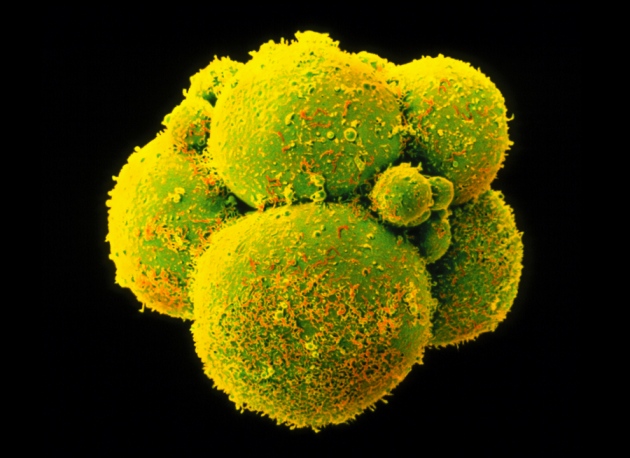In a world’s first, researchers at the Sun Yat-sen University in Guangzhou confirmed they had engineered embryos to modify the gene responsible for the fatal blood disorder thalassaemia.
The Chinese team used embryos they obtained from fertility clinics that had been created for use in IVF but had an extra set of chromosomes, following fertilization by two sperm, which prevents a live birth.
They injected 86 embryos with the Cas9 protein and left them for two days to allow the gene-editing to take place. Of the 71 that survived, 54 were genetically tested. The testing revealed that just 28 were successfully spliced and only a fraction of those contained the replacement genetic material. They also discovered a number of unexpected mutations in genes which should not have been effected.
In the paper, researchers led by Junjiu Huang, a gene-function researcher at Sun Yat-sen University in Guangzhou, tried to head off ethical concerns by using ‘non-viable’ embryos, which cannot result in a live birth, that were obtained from local fertility clinics. The team attempted to modify the gene responsible for β-thalassaemia, a potentially fatal blood disorder, using a gene-editing technique known as CRISPR/Cas9. The researchers say that their results reveal serious obstacles to using the method in medical applications.
Some say that gene editing in embryos could have a bright future because it could eradicate devastating genetic diseases before a baby is born. Others say that such work crosses an ethical line.
The team has used a gene-editing technique known as CRISPR/Cas9 which was discovered by scientists at MIT.
It works by capitalising on the fact that bacteria attack viruses by snipping away part of their genetic code, effectively dismembering the virus. The CRISPR technique uses a bacterially derived protein to cut-away a particular gene, which is then replaced or repaired by another molecule introduced at the same time.

The technique has been used in adult cells and animal models but never in human embyos.
The work was reported in the journal Protein and Cell.
For more details visit: http://www.sysu.edu.cn/2012/en/index.htm
